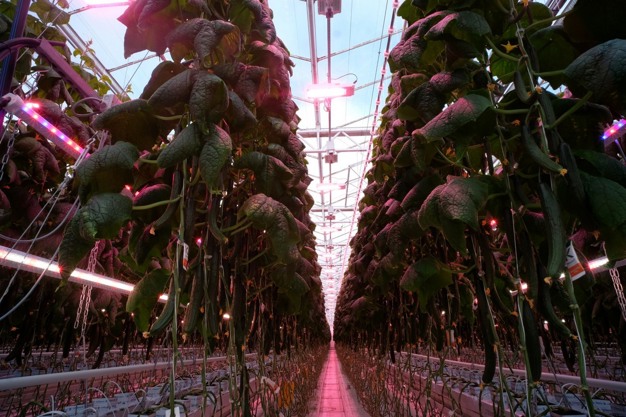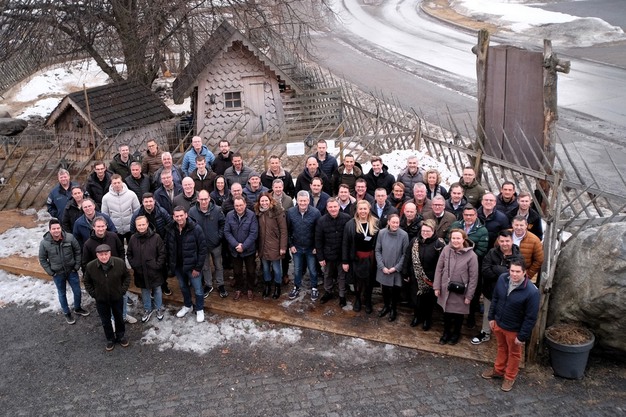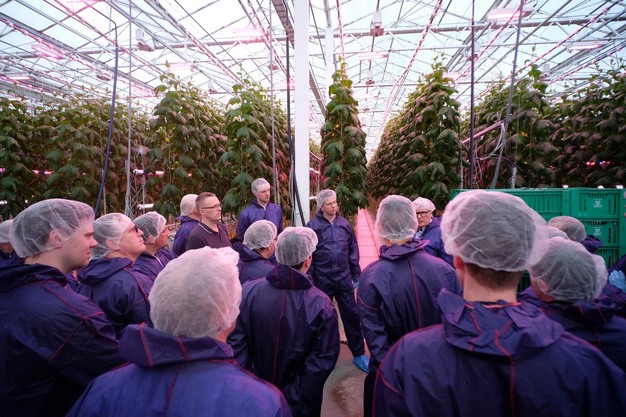The Tomato and Cucumber Community Event 2024 (TCCE), held in Närpes, Finland, from March 19-21, brought greenhouse growers together to experience the latest trends and innovations in the industry. This is the first event combining the cucumber and tomato growers, two of the main high-wire crops. With a primary focus on face-to-face knowledge sharing, the event facilitated valuable exchanges among participants representing 43 companies from 13 different countries.
Participants had the unique opportunity to visit four tomato greenhouses and two cucumber greenhouses, each showcasing varied installations of hybrid HPS and full LED lighting systems. The visit included the first greenhouse in Finland to adopt a full LED installation, setting a new benchmark for energy-efficient cultivation practices.

Närpes, known as the "High-Wire capital of Finland," provided an ideal destination for TCCE 2024, given its rich history of greenhouse practices. 90-100 % of cucumber and 60 % of tomatoes consumed in Finland are domestic production, of which around 80% is produced in Närpes. The region's expertise in optimizing lighting solutions, particularly in response to Finland's low natural light conditions and low outside temperatures, was evident throughout the event. From the use of Philips neon lights in the 1930s to the introduction of 400W HPS in 1986 and the subsequent adoption of hybrid lighting and full LED systems, Finnish growers have continuously pushed the boundaries of innovation in greenhouse cultivation.
In this region, installed light intensities between 400 and 600 µmol/m2/s are very common, which makes it a unique situation compared to other parts of Europe. Due to these light intensities, DLI's are approximately 30 Mol/m2/day year-round, allowing the growers to achieve high and flat production levels. Cucumber crops perform very well with approximately 5 kg/m2/wk of production, where tomato productions vary a bit more depending on the fruit-type and crop setup. Participants of this event have seen old and productive crops; however, challenges to transferring all the light into production have also been noticed.

The challenges for Finnish growers to get the full potential out of their full LED installations are mostly about humidity control and keeping good leaf quality. When switching from HPS to LED, the greenhouses are much less overheated, resulting in more screen usage and less air exchange. Due to this, dehumidification and the question of how and where to use heating pipes were the most discussed topics during the visits.
The fact that electricity prices showed exceptionally high peaks in January, followed by 2 weeks of extreme cold (up to -30° C), made the conditions very challenging during the past winter. The participants saw the effect of this on the crop, with leaf tipburn as the biggest challenge to keep sufficient leaf-volume. However, it has been acknowledged most crops as well show good recovery without losing potential towards the spring. The event also served as a platform for growers to receive updates on the latest research and product information from Philips Horticulture LED Solutions. The event highlights the importance of optimizing energy usage in greenhouse operations, what is and will become more evident for all regions in the world. Next to this, Philips shared the results of spectrum research, trials regarding nutrient strategies with LED, and the opportunities of color controllable lighting in the commercial production of cucumber and tomatoes.

As the industry continues to evolve, events like these play a crucial role in fostering a culture of knowledge-sharing and continuous improvement. The Tomato and Cucumber Community Event 2024 allowed growers to collaborate, innovate, and break the mental barrier of knowledge sharing.
For more information:
Signify
Daniele Damoiseaux, Global Marcom Manager Horticulture
daniela.damoiseaux@signify.com
www.philips.com/horti
